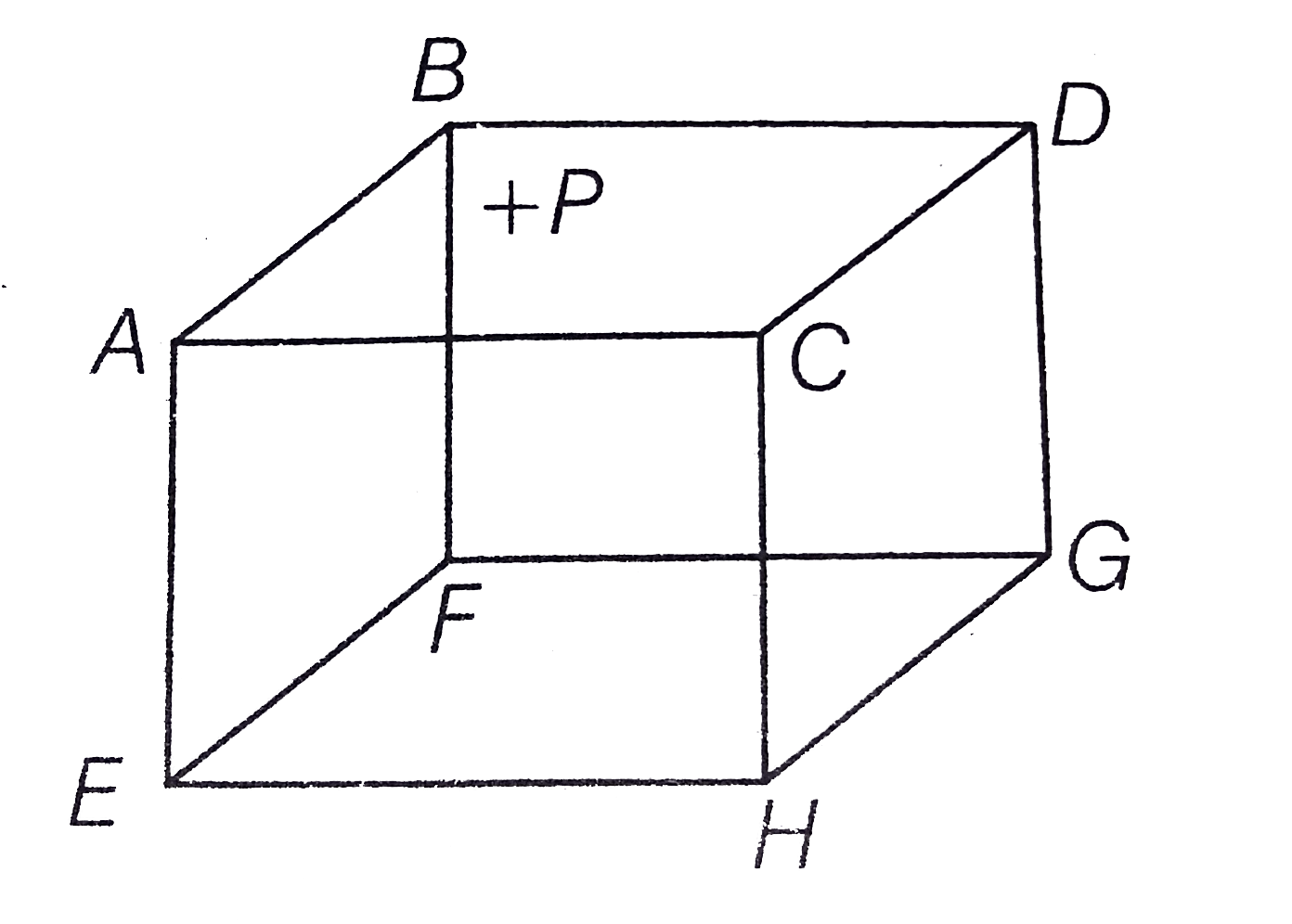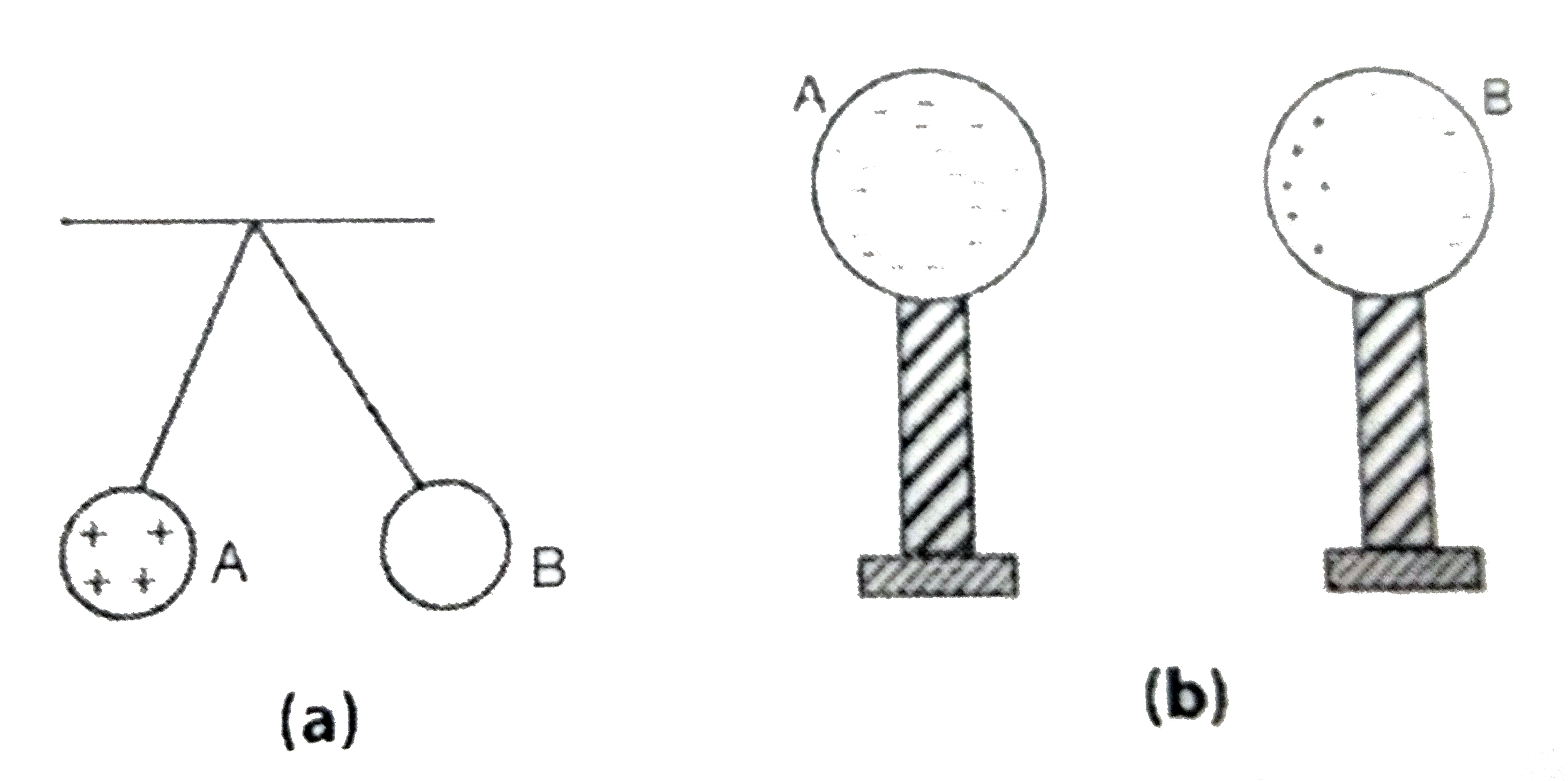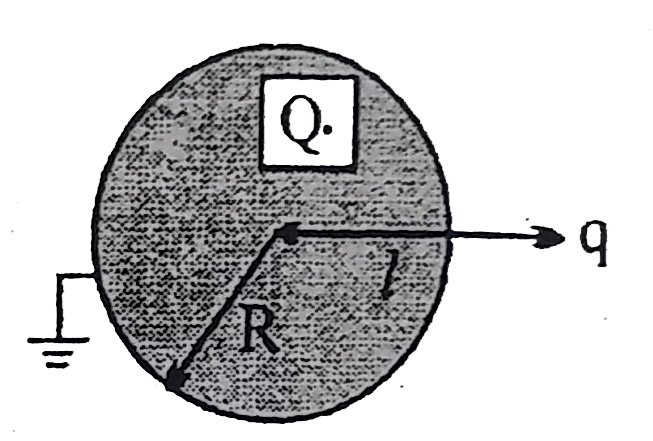ABCDEFGH is a hollow cube made of an insulator (figure) face ABCD has positive charge on it. Inside the cube, we have ionised hydrogen.

will be valid
will not be valid, since the ions would experience forece other than due to collisions with the walls.
will not be valid since collisions with would not be elastic
will not be valid because isotropy is lost
Due to presence of external positive charge on the face ABCD. The usual expression for pressure on the basis of kinetic theory will not be valid as ions would also experience electrostatic forces other than the forces due to collisions with the walls of the container. Due to pressence of positive charge the isotropy is also lost.
Topper's Solved these Questions
Similar Questions
(a) Two charged bodies, A and B are suspended from a fixed point with the help of silk threads as shown in the figure. If A is positively charged can we identify the nature of charge on 'B' ?

(b) A negatively charged conducting sphere A and a neutral sphere B are kepton insulating stands and brought cose to each other. The charge distri-bution is as shown in the figure.
Is B charged ? What type of force exists between A and B ?View Solution(a) Two charged bodies, A and B are suspended from a fixed point with the help of silk threads as shown in the figure. If A is positively charged can we identify the nature of charge on 'B' ?

(b) A negatively charged conducting sphere A and a neutral sphere B are kepton insulating stands and brought cose to each other. The charge distri-bution is as shown in the figure.
Is B charged ? What type of force exists between A and B ?View Solution
Knowledge Check
- Question 1 - Select One or More
ABCDEFGH is a hollw cube made of an insulator(figure)

face ABCD has positive charges on it. Inside the cube, we have ionsed hydrogen.
The usual kinetic theory expression for pressureAwill be validBwill not be valid, since the ions would experience force other than due to collision with the wallsCwill not be valid, since collision with walls would not be elasticDwill not be valid because isotropy is lost - Question 2 - Select One or More
ABCDEFGH is a hollow cube made of an insulator (figure) face ABCD has positive charge on it. Inside the cube, we have ionised hydrogen.
 Awill be validBwill not be valid since the ions would experience forces other than due to collisions with the walls.Cwill not be valid since collisions with walls would not be elastic.Dwill not be valid because isotropy is lost.
Awill be validBwill not be valid since the ions would experience forces other than due to collisions with the walls.Cwill not be valid since collisions with walls would not be elastic.Dwill not be valid because isotropy is lost. - Question 3 - Select One
Consider a solid cube made up of insulating material having a uniform volume charge density. Assuming the electrostatic potential to be zero at infinity, the ratio of the potential at a corner of the cube to that at the centre will be
A1:1B1:2C1:4D1:8
(a) Two charged bodies, A and B are suspended from a fixed point with the help of silk threads as shown in the figure. If A is positively charged can we identify the nature of charge on 'B' ?

(b) A negatively charged conducting sphere A and a neutral sphere B are kepton insulating stands and brought cose to each other. The charge distri-bution is as shown in the figure.
Is B charged ? What type of force exists between A and B ?View SolutionA cube has been cut out from a piezoelectric crystal. When the cube was compressed, it exhibited electric charges on the faces: a positive charge on the upper face and a negative charge on the lower (Figure (a)). When the cube was stretched, the charges were found to change their signs (Figure (b)). What will be the signs of the charges on these faces if pressure is applied as shown in Figura (c) ?
View SolutionA cube is made from six thin insulating square faces, each square having side 'd' and carrying a uniformly distributed charge of Q. The magnitude of electric flux leaving the sixth face, due to the electric field of other five faces, is φ. The magnitude of electrostatic force on each face of cube is F. Then,
View SolutionThere is a cubical cavity inside a conducting sphere of radius R. A positive point charge Q is placed at the centre of the cube and another positive charge q is placed at a distance 1(>R) from the centre of the sphere. The sphere is earthed

Net charge on the outer surface of conducting sphere isView SolutionA hollow copper sphere & a hollow copper cube of same surface area & negligible thickness , are filled with warm water of same temperature and placed in an enclosure of constant temperature a few degrees below that of the bodies. Then in the beginning:-
View Solution

